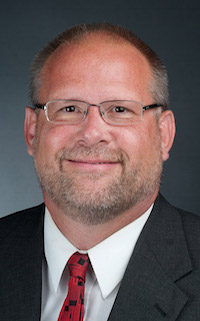
American schools teach the principles of democracy, but they are one of the last bastions of anti-democratic organization, says Dr. Perry Rettig in a new book, “Reframing Decision Making in Education: Democratic Empowerment of Teachers and Parents.”
A former elementary school teacher and principal, Rettig is currently a professor and administrator at Piedmont College in Demorest, Georgia. His fourth book on education reviews the state of K-12 school systems in the U.S. and describes how decision-making practices could improve if they were based on democratic principles.
Rettig says past efforts to make teachers, parents, and even students “feel” empowered rarely work because of the linear, top-down design of school administration. Like most organizations created in the last 200 years, these administrations follow a logic born of the Industrial Age, he says. “Schools follow a pattern dating back to Sir Isaac Newton—that order in any system can be maintained if you simply break it down into manageable parts. Information and instructions flow in one direction only, from the top to the bottom,” he said.
Rettig says today’s schools, with instant communications available across all levels, call for a new organizational model that is more in line with quantum mechanics and chaos theory. “Few simple cause-effect relationships exist within real-life systems,” he writes. “Effects are often far removed—in time and space—from their multiple causes. The whole can only be understood by examining the entire system in a unified fashion.” And, Rettig notes, few principals would disagree that just as in chaos theory, very small random events can have far-reaching consequences.
Rettig says the current model assumes that teachers and professional staff know less than the administrators, which is not possible in today’s era of highly specialized education. A principal “cannot be well versed in all content areas, technology, special education programs, ESL/bilingual, and the like,” he said. Nevertheless, “The entire organization is governed by literally hundreds of impersonal policies that are developed and approved by the administration and the board of education. Communication is clearly funneled through pyramidal flow charts. E-mail and memoranda rule the day. … This is where the professional-bureaucratic conflict emerges. Bureaucracies require standardization and routinization, and professions require judgement, autonomy, and flexibility.”
In order to teach well, teachers “need autonomy to meet the idiosyncratic needs of their students, … and organizational models should reflect that,” he said. “Bureaucracies should help teachers to perform their professional duties; they should help keep the system focused and fiscally fit; they should help meet the needs of mandates, but they must not be the tail that wags the dog.”
The solution lies in granting teachers, parents, and to some extent students greater say in the design and administration of schools. “I am not in favor of a model of one-person-one-vote,” Rettig says. Rather I am in favor of a representational model. … All groups need to be represented, and their representatives must be chosen by the constituents.”
“The democratic process shortens the feed-back loop—the distance between decision, action, effect, observation, and reconsideration,” he said. “These dynamic structures allow for the system to respond to the ever-changing demands of the environment—to survive. Yet we spend a great deal of money, energy, and time attempting to maintain equilibrium, and we don’t even realize we’re killing our organizations.”
Inertia is also a problem with current models, Rettig says. “People are afraid to begin the change process because they are afraid they may very well lose the position of their status (with associated pay and benefits), and they have no idea what they may end up doing when they come through the other end of the change process. … But it’s not a black-and-white, either/or way of thinking. Rather it is a gray, both/and, type of thinking of organizational structures. Bureaucratic structures need to be enhanced with shared decision making processes and practices.”
Rettig notes that “colleges and universities … have established a model of shared governance that has served them well for many decades. It is this derivative democratic model that could provide the most direct and pragmatic approach for K-12 schools to infuse our founding democratic principles into a shared governance model for real impact.”
About the author: Dr. Perry R. Rettig is currently Vice President for Academic Affairs and Professor of Educational Administration and Leadership at Piedmont College in Demorest, Georgia. Formerly a professor and administrator with the University of Wisconsin Oshkosh, he is a 1984 graduate of the University of Wisconsin Whitewater. He earned a master’s degree in administrative leadership from the University of Wisconsin Milwaukee in 1988 and a Ph.D. in leadership and supervision in 1994.from Marquette University, where he was named a Marquette University Distinguished Scholar in 2002 and 2004. “Reframing Decision Making in Education” is published by Rowman & Littlefield, Lanham, Maryland.







